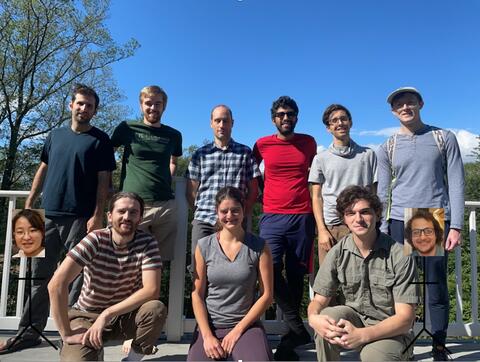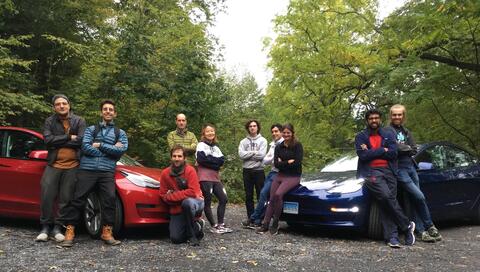Who we are
The group’s research focuses on understanding how biological systems operate using approaches from theoretical physics. We use statistical physics to understand the structure and function of biological membranes, which experiments have shown operate close to a demixing critical point in the Ising universality class. We also use tools from information theory to place physical bounds on the ability of organisms to function that arise from their limited ability to measure their environment and from their limited energy budget.
We are in the Department of Physics and the QBio Institute at Yale University, located physically in the Yale Science Building (YSB) in the QBio area, C level.
Selected Publications
Escherichia coli chemotaxis is information limited. Henry H. Mattingly, Keita Kamino, Benjamin B. Machta, Thierry Emonet. Nature Physics 17, 1426–1431 (2021).
Surface densities prewet a near critical membrane. Mason Rouches, Sarah L. Veatch, Benjamin B. Machta. Proceedings of the National Academy of Sciences 118 (40) e2103401118 (2021).
Irriversibility in dynamical phases and transitions. Daniel S. Seara, Benjamin B. Machta, Michael S. Murrell. Nature Communications 12 392 (2021) pdf
Energy Dissipation Bounds in Autonomous Thermodynamic Systems. Samuel J. Bryant, Benjamin B. Machta. Proceedings of the National Academy of Sciences 117 (7), 3478-3483 (2020), pdf
Maximizing the information learned from finite data selects a simple model. Henry H. Mattingly, Mark K. Transtrum, Michael C. Abbott, Benjamin B. Machta. Proceedings of the National Academy of Sciences 115 (8) 1760-1765 (2018), pdf


